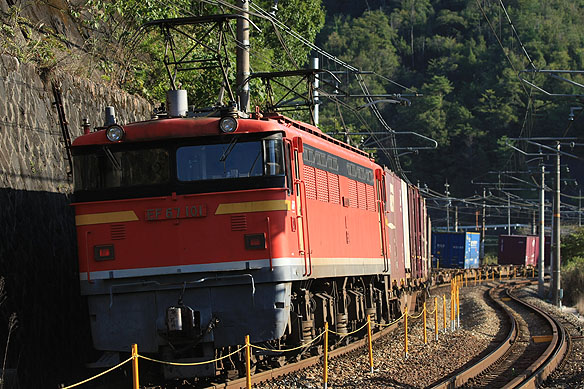Background and overview
After the splitting of the former Japanese National Railways (JNR) into
new privatized JR companies, JR Freight remodeled EF65 into EF67-100 in
order to displace remaining EF61-200 in 1990. EF67-100s differ from former
EF67-0s in remodeled from EF65 vehicles. Gear ratio of traction motors
was changed into 4.44 same as EF60 in order to improve traction force,
although the gear ratio of EF65 vehicles is 3.83.
Car body
Although EF67-0s are equipped with automatic uncoupling mechanism to enable
the banking locomotives to be uncoupled on the fly, EF67-100 are not equipped
since JR Freight planned to discontinue uncoupling while in motion from
2002 timetable revision. In addition, the gangway door and the access platform
at the Osaka end are gotton rid of.
Traction unit and auxiliary equipments
Their traction system is FCH3A, same as that of EF67-0, featuring reverse conducting thyristor. EF67-103 and afterward employ Gate Turn Off (GTO) thyristor.
Refurbishment
From 2003 a refurbishment programme was commenced on EF67-100, with new
single-arm current collector, FPS4, and rectangular LED taillights. FPS4s
were subsequently returned to cross-arm type pantographs, PS22B. Their
livery changed into orange with grey and white lines along the lower body
side.
Operations
EF67-100 vehicles are used on the freight train between Hiroshima and Saijyo as banking engines. |
|

